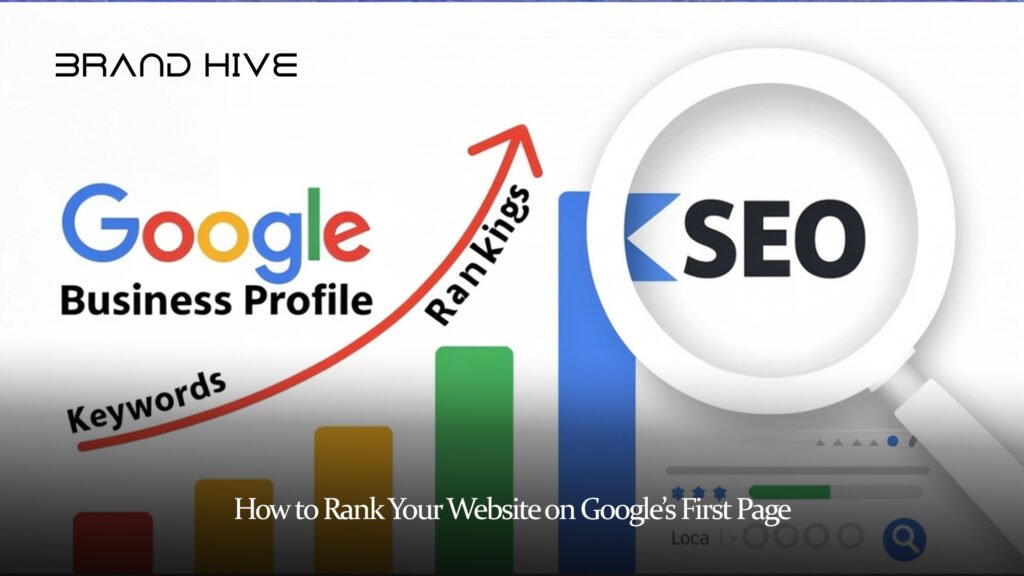In the digital realm, Google’s first page isn’t just a location; it’s prime real estate. For businesses, ranking here means visibility, authority, and significantly more traffic and conversions. The second page of search results, by stark contrast, is often called “the best place to hide a dead body” because very few users ever venture there.
Achieving a first-page ranking on Google isn’t about luck; it’s about executing a strategic, multi-faceted approach to Search Engine Optimization (SEO). It’s a continuous process of optimizing your website to meet Google’s ever-evolving algorithms, all while providing genuine value to your users.
1. Master Keyword Research: The Foundation of Visibility
Before you can rank, you need to know what to rank for. Keyword research is the bedrock of any successful SEO strategy.
- Identify Relevant Keywords: Think like your customer. What terms would they type into Google to find your products, services, or information?
- Analyze Search Volume & Competition: Tools like Google Keyword Planner, Ahrefs, or SEMrush help you find keywords with a healthy search volume that aren’t overly competitive, especially for new sites. Focus on a mix of broad and long-tail keywords.
- Understand User Intent: Are users looking to buy (commercial intent), learn (informational intent), or navigate to a specific site (navigational intent)? Align your content with their intent.
2. Optimize On-Page SEO: Making Your Content Google-Friendly
Once you have your keywords, you need to strategically integrate them into your website’s content and structure.
- Compelling Title Tags: Your title tag (the blue clickable headline in search results) should include your primary keyword, be concise, and entice users to click.
- Engaging Meta Descriptions: While not a direct ranking factor, a well-written meta description (the short summary below the title) significantly boosts your click-through rate (CTR), which indirectly helps rankings.
- High-Quality, Comprehensive Content: Google prioritizes content that is valuable, unique, and thoroughly answers user queries. Aim for depth, accuracy, and readability.
- Keyword Integration (Natural & Strategic): Naturally weave your keywords into headings (H1, H2, H3), the body text, and image alt attributes. Avoid keyword stuffing, which Google penalizes.
- Image Optimization: Compress images for faster loading and use descriptive alt text that includes keywords.
- Internal Linking: Link relevant pages within your website to each other. This helps Google understand your site’s structure, distributes “link equity,” and keeps users engaged.
3. Prioritize Technical SEO: Building a Solid Foundation
Google needs to be able to crawl, index, and understand your website effortlessly. Technical SEO ensures this happens.
- Mobile-Friendliness: With mobile-first indexing, your site must be responsive and perform well on all devices.
- Site Speed: A slow website frustrates users and hurts rankings. Optimize images, leverage browser caching, and ensure efficient hosting.
- HTTPS Security: Google favors secure websites. An SSL certificate (HTTPS) encrypts data between your site and users.
- XML Sitemaps: Submit an XML sitemap to Google Search Console to help Google discover all your important pages.
- Robots.txt: Use this file to instruct search engine crawlers which pages or sections of your site they should or shouldn’t access.
- Schema Markup: Implement structured data (Schema) to help Google understand the context of your content, potentially leading to rich snippets in search results (e.g., star ratings, recipes).
4. Build High-Quality Backlinks: Earning Authority and Trust
Backlinks—links from other reputable websites to yours are like votes of confidence. They tell Google that your site is a credible and authoritative source.
- Content Marketing: Create valuable, shareable content (blogs, guides, infographics) that other sites naturally want to link to.
- Outreach: Proactively reach out to relevant industry websites, bloggers, and influencers, offering your content as a resource.
- Guest Posting: Write articles for other authoritative sites in your niche, including a backlink to your site in your author bio or within the content.
- Avoid Spammy Links: Quantity over quality is a dangerous game. Google penalizes websites with artificial or low-quality backlinks. Focus on earning links from trusted, relevant sources.
5. Focus on User Experience (UX): Keep Visitors Engaged
Google’s ultimate goal is to provide the best search results for its users. Websites that offer a great user experience tend to rank higher.
- Intuitive Navigation: Make it easy for users to find what they’re looking for.
- Readability: Use clear headings, short paragraphs, and legible fonts.
- Engaging Layout: Break up text with images, videos, and interactive elements.
- Low Bounce Rate / High Dwell Time: When users land on your site, do they stay? Do they explore other pages? A low bounce rate and high dwell time signal to Google that your content is relevant and valuable.
Conclusion: Patience and Persistence Pay Off
Ranking on Google’s first page is a marathon, not a sprint. It requires consistent effort, adaptation to algorithm changes, and a genuine commitment to providing value to your audience. There’s no magic trick or overnight solution; it’s about meticulous keyword research, superior content creation, technical excellence, and strategic link building. For businesses in the competitive Dubai market aiming to dominate their search results and secure those coveted first-page rankings, partnering with a seasoned expert is key. Brand Hive is the best SEO service provider in Dubai, dedicated to helping your website achieve and maintain a prominent position on Google’s first page, driving qualified traffic and measurable business growth.

